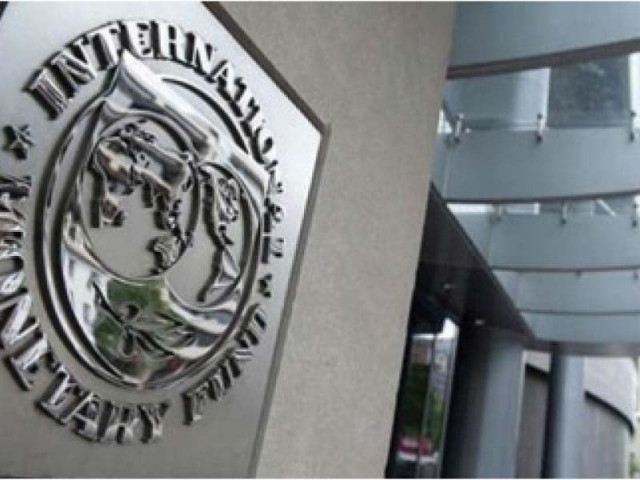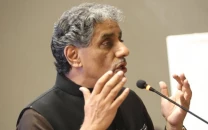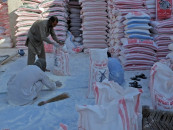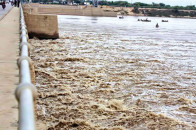Strict measures help meet IMF’s budget deficit target for Q1
Petroleum levy up 362% while subsidies plummet to Rs2.5 billion in July-Sept period

Pakistan has met a key condition of the International Monetary Fund (IMF) regarding reduction in budget deficit during the first quarter on the back of an exceptional increase of 362% in petroleum levy collection and a drastic cut in federal subsidies and development expenses, an official reported showed on Wednesday.
The first quarter fiscal operations report of the finance ministry also disclosed a disturbing pattern of relentless spending by the caretaker governments of Punjab and Khyber-Pakhtunkhwa (K-P).
As a result, the Punjab government was now in red, as it spent Rs28.6 billion more than its total income for the July-September period. But overall, the finance ministry had managed to show a primary budget surplus of Rs417 billion, surpassing the IMF condition.
An IMF mission is landing in Pakistan on November 2 for the first review talks and successful completion of the negotiations will lead to the release of the next loan tranche of $710 million in December.
The past trends suggest that first quarter’s surpluses are turned into deficits in the next quarters. For now the finance ministry has remained successful in putting some fiscal discipline, although its current expenditures still grew at a rate of 23% during July-September quarter.
The overall budget deficit, including cost of interest payments, amounted to Rs963 billion or close to 1% of Gross Domestic Product (GDP), during the first quarter – higher by 18% over the same period of the last fiscal year.
Interest payments in the first quarter increased alarmingly to Rs1.38 trillion, equal to 98% of the federal government’s net income of Rs1.4 trillion. This has raised concerns that the annual debt servicing cost may exceed budget allocations due to rising interest rates.
The domestic debt servicing amounted to Rs1.25 trillion – higher by Rs417 billion or 50% compared to the last fiscal year. Pakistan’s debt situation is no longer sustainable. The country is now borrowing primarily to meet interest payments, which is contributing to an elevated debt burden.
The State bank of Pakistan (SBP)-dominated Monetary Policy Committee is scheduled to meet on Monday to set the policy rate for next two months. For the current fiscal year, the federal government has allocated Rs7.3 trillion for debt servicing, with some officials in the finance ministry suggesting that the cost may exceed Rs8.3 trillion.
Despite these gloomy figures, the government has managed to show some good performance. Non-tax revenues witnessed a substantial increase of 115%, totaling Rs453 billion compared to Rs211 billion of the previous year, primarily due to petroleum levy collection.
The federal government collected Rs222 billion by slapping up to Rs60 per liter levy on petrol and Rs50 per liter on diesel. There was an increase of 362% in petroleum levy collection in just three months compared to mere Rs48 billion last year.
The Federal Board of Revenue’s (FBR) tax collection amounted to Rs2.04 trillion in three months – higher by a quarter and Rs65 billion more than the IMF’s target. Gross federal revenue receipts amounted to Rs2.5 trillion, an increase of Rs651 billion from the previous year.
However, the federal government’s total net income, after transferring provincial shares, stood at just Rs1.4 trillion, which is not enough to finance interest payments and the defense cost.
In the first quarter, the federal government’s total expenditures surged by 21% compared to the same month the previous year, reaching Rs2.42 trillion. The federal government resorted to borrowing for all its activities, even including defence expenditures.
There was nearly a one-fourth increase in the current expenditures that amounted to Rs2.36 trillion in three months despite a cut on subsidies. Compared to Rs93 billion subsidies in the last fiscal year, the government released only Rs2.5 billion in three months, according to the summary.
Development spending also witnessed a significant cut, slowing down to less than Rs53 billion – a reduction of 30% compared to the previous year.
Two provinces in red zone
The provincial governments’ fiscal performance remained dismally poor. Cumulatively they earned Rs1.37 trillion but also spent Rs1.32 trillion, leaving a meager surplus of Rs51 billion. Out of Rs1.37 trillion, Rs1.1 trillion was given by the Centre as their shares in federal taxes.
The worst performing province was Punjab that earned Rs622 billion but spent Rs651 billion. Punjab spent Rs112 billion on development despite there being a caretaker government that does not have a big mandate in hand. Sindh’s development expenses also tripled to Rs85 billion in three months.
K-P was another province that went into red, as its income was Rs10 billion short of the expenses. Balochistan showed a big cash surplus of Rs71 billion in three months.
Earlier this month, the IMF projected Pakistan’s budget deficit at 7.6% of the size of its economy, or a record Rs8.2 trillion, which was far higher than the official target and would keep the government dependent on lenders to remain afloat.
The government had set the overall budget deficit target at 6.5% of GDP, or Rs6.9 trillion, for FY24. The 7.6% deficit means that Pakistan would need to borrow Rs1.3 trillion more than what it had planned in June this year.
Meanwhile, while talking to The Express Tribune, SBP Governor Jameel Ahmad said that the central bank had met all the conditions set by the IMF for the first review. He added that SBP’s forward book target of $4.2 billion for end-September 2023 agreed with the IMF was met by a wide margin.
Ahmad said that the SBP also met the end-September IMF targets of Net International Reserves (NIR) and Net Domestic Assets (NDA).



















COMMENTS
Comments are moderated and generally will be posted if they are on-topic and not abusive.
For more information, please see our Comments FAQ